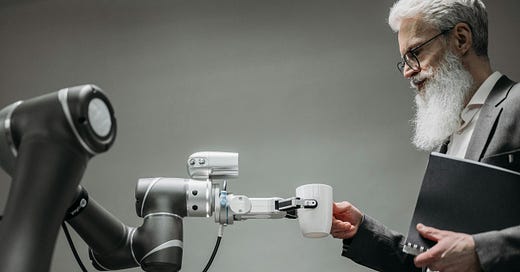I'm not sure if your childhood has similar but I distinctly remember my school teachers impressing upon me the need to show the working in problem solving.
It was not enough to simply provide the answer. Indeed often there would be more points available for the working than the outcome. If the outcome was incorrect there was value in the workings. Or by following along the process of the working you could spot errors and make early corrections.
I was thinking about this as I was reviewing AI and dynamic training solutions that are now building a presence in the marketplace in sports.
As a coach, there is such value in the "working" of how we build out a training strategy and implementation plan with an athlete.
Let's dive into a general outline:
Firstly accurately capturing the current situation for an individual, reviewing their prior history of training successes or challenges.
Secondly understanding the destination or goal that the individual is looking towards. This second step can be really interesting as you explore together the underlying motivations and emotions often encapsulated in the goal.
Thirdly, creating a gap or needs analysis between here to there.
Fourth exploring the potential to close the gaps, limitations and potentially hidden assets or opportunities.
Finally, once all this input information is gathered an initial plan is created. All of the ingredients above go into this.
Also added are a whole range of other inputs, for example as a brain-dump it includes
training philosophies,
the blending of races,
incorporating key benchmarking events,
integrating adaptation periods, perhaps within a holiday or specifically overload during holidays,
balancing allocations of efforts across disciplines,
reviewing weekly totals,
individual session durations or distances,
progression rates,
intensity distributions across timeframes.
There is a lot of balancing and blending to create that first iteration and overall strategy.
The critical part is that the athlete gets to understand the "workings". They can feel part of that process. That it feels connected to them as individuals.
With that confidence and trust, they can more easily visualise themselves being successful in the plan.
They have a belief that the challenge, whilst it may be difficult, is within their abilities. For a visualisation imagine a tall mountain climb. By walking the athlete through the logistics, the interim camps, the durations and distances of each stage and showing them the workings they can place themselves in each element, all in their mind before they have even taken their first step.
Not only does this process mean that the outcome is more likely, but it also helps when there are challenges during the time together. By having the trust and understanding the approach isn't brittle. Instead, if there is an unexpected block or change required, it's possible to adapt. A small piece of the plan can easily flex. Or if appropriate, the individual knows that this is the time for the obstacle to be removed to stick to their path, perhaps with force of will or prioritisation. They also understand the impact and value of this.
I often listen to song exploder. It's fascinating to hear the depth and backstory of so many songs. Sometimes there will be familiar tunes that take on a whole new life and meaning when you hear the extent of context that lies behind the few minutes. If you haven't listened to it before here are my favourite 3. Some for fun and some for deeper emotion and nostalgia. The reason for highlighting these is that it's similar to understanding training approaches. There is a richness and huge value in understanding more than simply the outcome but instead hearing the "why" behind the result.
So bringing this back to the future of training platforms. As these become more and more sophisticated, the relationship the coach has with the content they are leveraging to coach an athlete or for the athlete to self-coach is going to be key. Understanding the workings and having belief in the training and the journey you will be on is a standout consideration.
Features and functionality is important but it's the quality of the training that matters.
Enjoy the training.
If any of the readers have experienced positively with AI solutions or had challenges, whether in the training context or wider, I'd love to hear in the comments.





